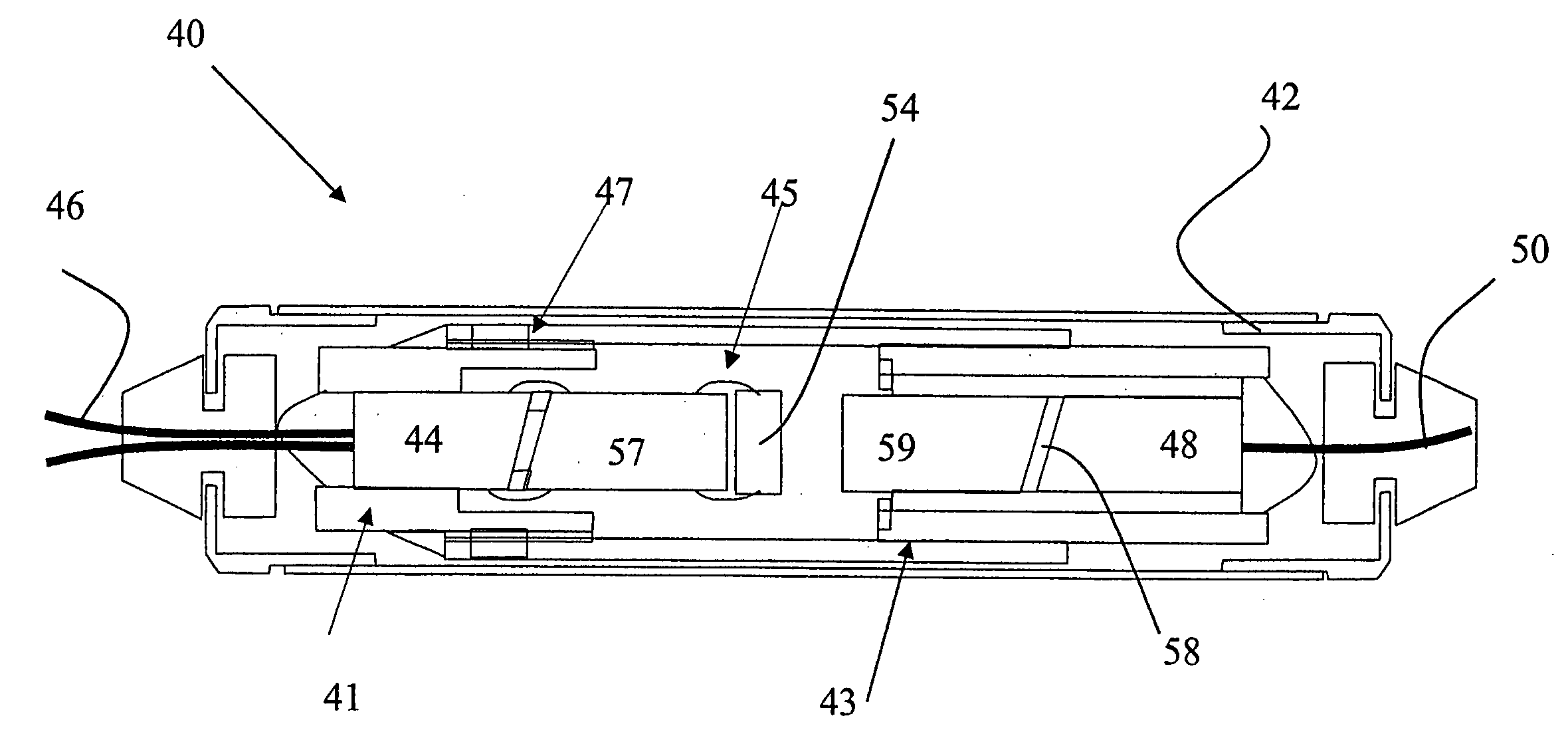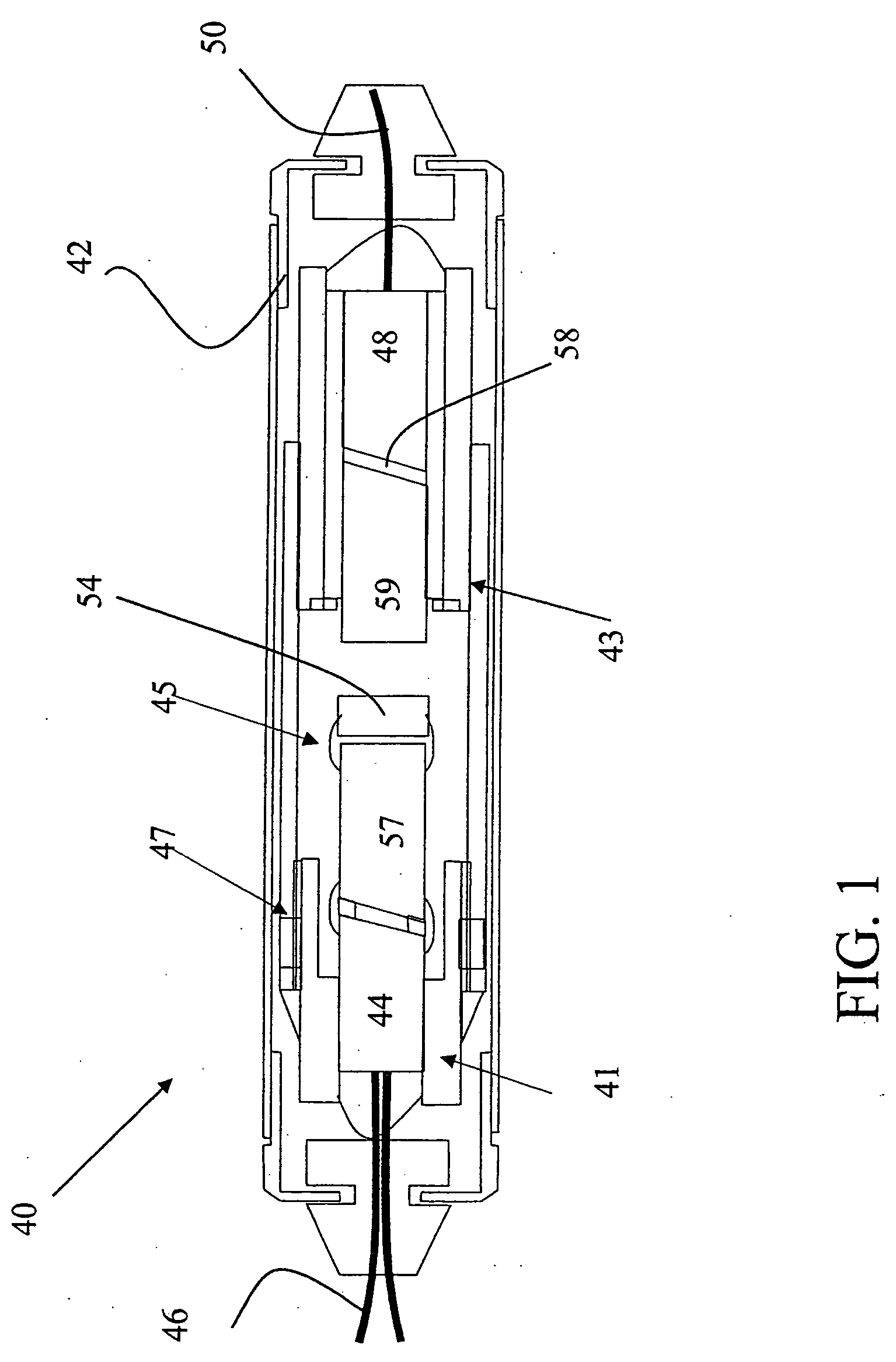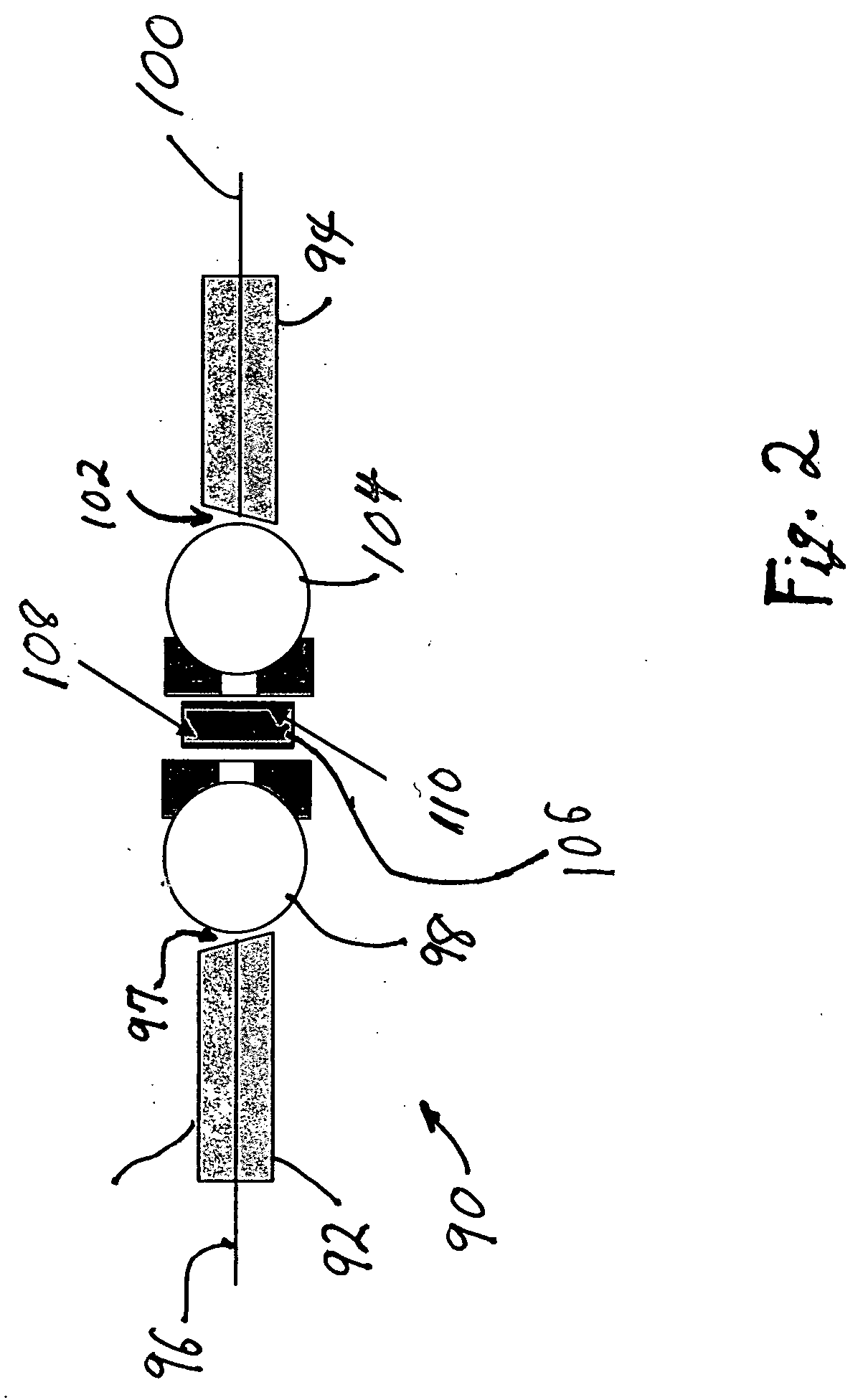Gain-flattening apparatus and methods and optical amplifiers employing same
a technology of gain-flattening apparatus and optical amplifier, which is applied in the direction of fiber transmission, lasers, transmission, etc., can solve the problems of theoretical transmission curve of gain, uneven gain level of commercially employed optical amplifier, and general undesirable
- Summary
- Abstract
- Description
- Claims
- Application Information
AI Technical Summary
Problems solved by technology
Method used
Image
Examples
Embodiment Construction
[0028] The following discussion of certain exemplary embodiments of the invention focuses on gain-flattening apparatus used in multiplexed optical signal systems, such as telecommunication systems and the like. GFF apparatus, gain-flattened optical amplifiers employing them, their design and production, and methods of the present invention, however, are applicable generally to optical systems. Reference is made here to commonly assigned U.S. patent application Ser. No. 10 / 874,559, entitled Gain-Flattening Apparatus And Methods And Optical Amplifiers Employing Same, published on Nov. 10, 2005 as U.S. patent application publication number 20050248832 A1, which is incorporated here by reference in its entirety for all purposes. In certain of the embodiments disclosed here, for convenience of discussion, the gain-flattening apparatus are designed for dense wavelength division multiplexed (“DWDM”) telecommunications systems operating in the C-band and employing EDFA amplifiers. However, ...
PUM
 Login to view more
Login to view more Abstract
Description
Claims
Application Information
 Login to view more
Login to view more - R&D Engineer
- R&D Manager
- IP Professional
- Industry Leading Data Capabilities
- Powerful AI technology
- Patent DNA Extraction
Browse by: Latest US Patents, China's latest patents, Technical Efficacy Thesaurus, Application Domain, Technology Topic.
© 2024 PatSnap. All rights reserved.Legal|Privacy policy|Modern Slavery Act Transparency Statement|Sitemap



